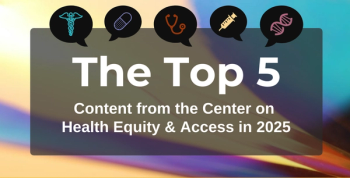
WHO Calls for Soda Taxes, Marketing Limits to Fight Childhood Obesity
The report comes in a year of increased attention to the global obesity and diabetes crisis.
The World Health Organization (WHO) this week called for taxing sugar-sweetened beverages and regulating the way foods are pitched to children in the wake of a worldwide obesity epidemic that affects rising numbers of children in low- and middle-income countries.
A report from the Commission on Ending Childhood Obesity, known as ECHO, wrapped up a 2-year effort to examine alarming trends of childhood weight gain, which the group found are affected by changes in diet, more sedentary lifestyles, and efforts by food and beverage companies to reach new markets.
“Increased political commitment is needed to tackle the global challenge of childhood overweight and obesity,” said Sir Peter Gluckman, commission co-chair. “WHO needs to work with governments to implement a wide range of measures that address the environmental causes of obesity and overweight, and help give children the healthy start to life they deserve.”
The WHO report comes in a year of increased global attention to the health crisis of obesity and diabetes, particularly what the related epidemics are costing government health systems.
In May 2015, the journal
This week’s WHO found increased urbanization and marketing of unhealthy foods and beverages are playing major roles in the rise of obesity among children. Overweight prevalence among those age 5 and younger has increased from 4.8% in 1990 to 6.1% in 2014. In raw numbers, the WHO found the number of affected children has gone up from 31 million to 41 million. Of this total, the number from lower middle-income counties—emerging markets for the food industry—has gone up from 7.5 million to 15.5 million.
WHO had 6 overall recommendations for governments in its report: promote the intake of healthy foods, promote physical activity, strengthen healthcare from preconception through pregnancy, promote healthy early childhood diets and physical activity (including breastfeeding), implement comprehensive nutrition programs in schools, and promote weight management for those who are obese.
Its specific charges within each recommendation were tougher, however. The recommendations to “promote healthy food” were largely directed at the food and beverage industry:
· Develop “appropriate and context specific” nutrition guidelines for adults and children, in “a simple, understandable and accessible manner.” While there was no mention of the recently released 2015
· Put in “effective” taxes on sugar-sweetened beverages, namely soda. Early results from a tax in
· Take steps to regulate market of unhealthy foods and beverages to children, including reducing exposure. A recent study on
· Create nutrient profiles to identify unhealthy foods and beverages.
· Nations should work together to regulate cross border marketing of unhealthy foods.
· Implement a global standard for nutrient labeling, including front of package labeling.
· Support public education of adults and children on nutrition literacy.
· Schools, child care settings, sports facilities and other areas where children gather should have healthy food.
· Increased access to healthy food in disadvantaged communities.
The themes of education and limits on marketing unhealthy food to and drinks to children are repeated throughout the report. But the WHO is clear about where the responsibility for this task falls:
“The greatest obstacle to effective progress on reducing childhood obesity is a lack of political commitment and a failure of governments and other actors to take ownership, leadership and necessary actions,” the report states.
Newsletter
Stay ahead of policy, cost, and value—subscribe to AJMC for expert insights at the intersection of clinical care and health economics.








































